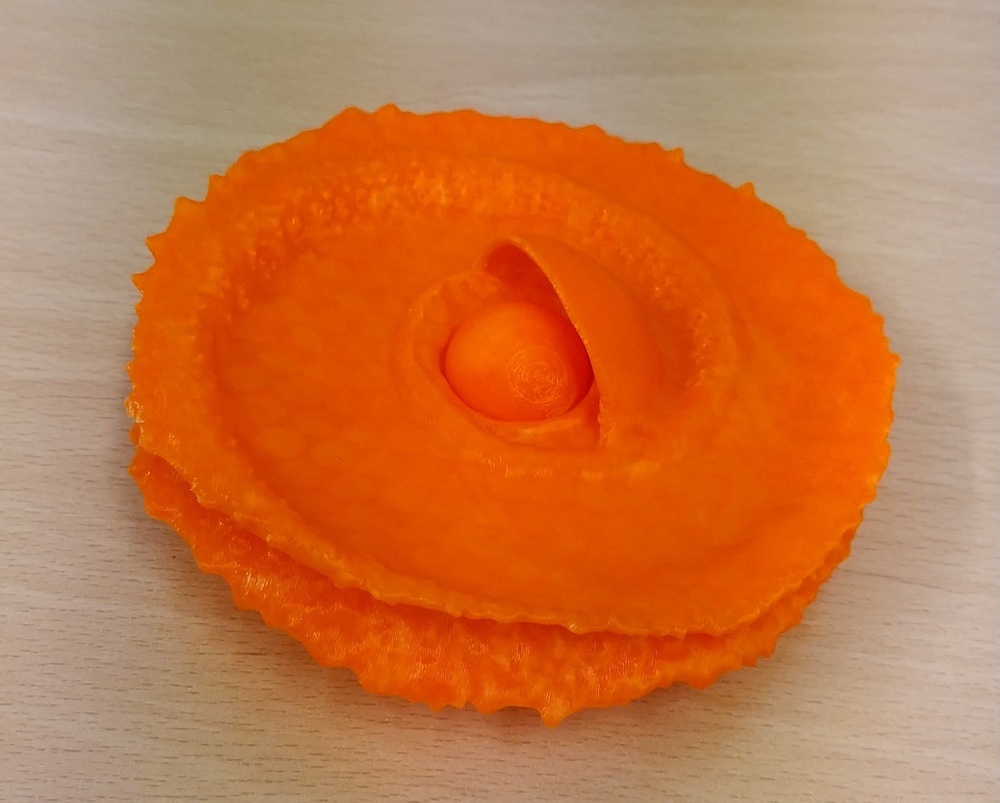Be-type stars
Be stars are young, massive, very hot stars with a high rotation speed that have a disk-shaped envelope around them, generated by material ejected from the star itself.
These are stars classified as B, whose temperature ranges from 10,000 to 33,000 degrees and their radius is between 2 and 6.5 times the radius of our Sun. The letter «e» is used to identify certain B-type stars that exhibit energy emission in the hydrogen spectral line H alpha. This emission is produced by the reprocessing of ultraviolet light from the star as it penetrates the surrounding gaseous disk.
The high rotation speed slightly deforms the star at the equator, making it look more like a flattened ball. Some models indicate that the core rotates independently of the spin of the rest of the star.
Theoretical models also point to the existence of seismological processes (such as earthquakes, but in stars, known as non-radial oscillations) in their interior that cause pulsations; that is, some parts of the star expand while other parts contract.
The pulsations, along with the star’s high rotation speed and magnetic field, are responsible for the formation of the gas disk around it.
Sometimes, Be stars can have a neutron star as a companion. These stars are very compact and have very strong magnetic fields, and their interaction with the disk of the Be produces the emission of light in X-rays. In these cases, the two-star system is classified as a BeX-type.
The 3D model
In this model, the main characteristics of the theoretical model of a Be-type star have been represented.
The center of the model is occupied by the star, shown as a slightly elongated bulge, like a melon. The bulge protrudes above and below the disc.
The pulsations of the star have been represented as subtle protuberances on its surface.
At the bottom, an opening has been left that allows access to the core of the star, represented by a ball. Since the core has a spin independent of the rest of the star, we have left this ball free, so that it can be spinned.
Spiral-shaped structures depart from the star, representing ejected matter, as if it were water thrown out by a rotating sprinkler in a garden. This stellar gas remains for a while around the star forming the disk. As we move away from the star, the disk is scattered through space, a fact that is shown in the area of the outer edge of the model.
This work has been carried out with a grant from the R&D&I ‘Proof of Concept’ 2022 (PDC2022) call for projects, financed by the European Union through the NextGenerationEU Recovery, Transformation and Resilience Plan. Project’s reference: PDC2022-133930-I00.

